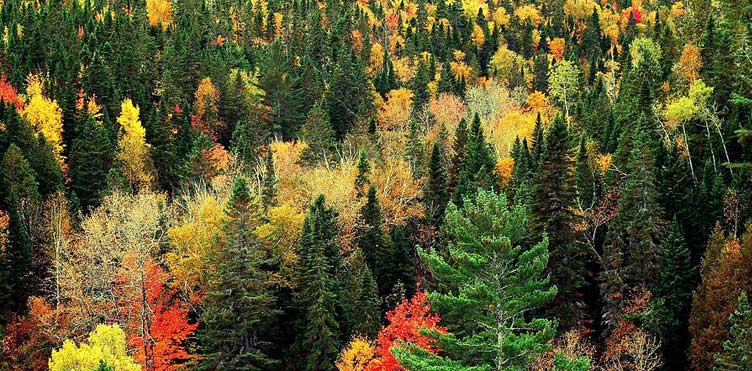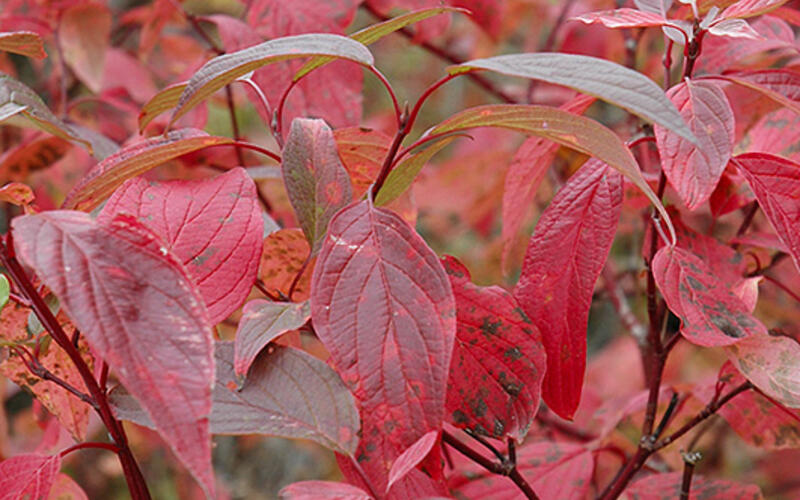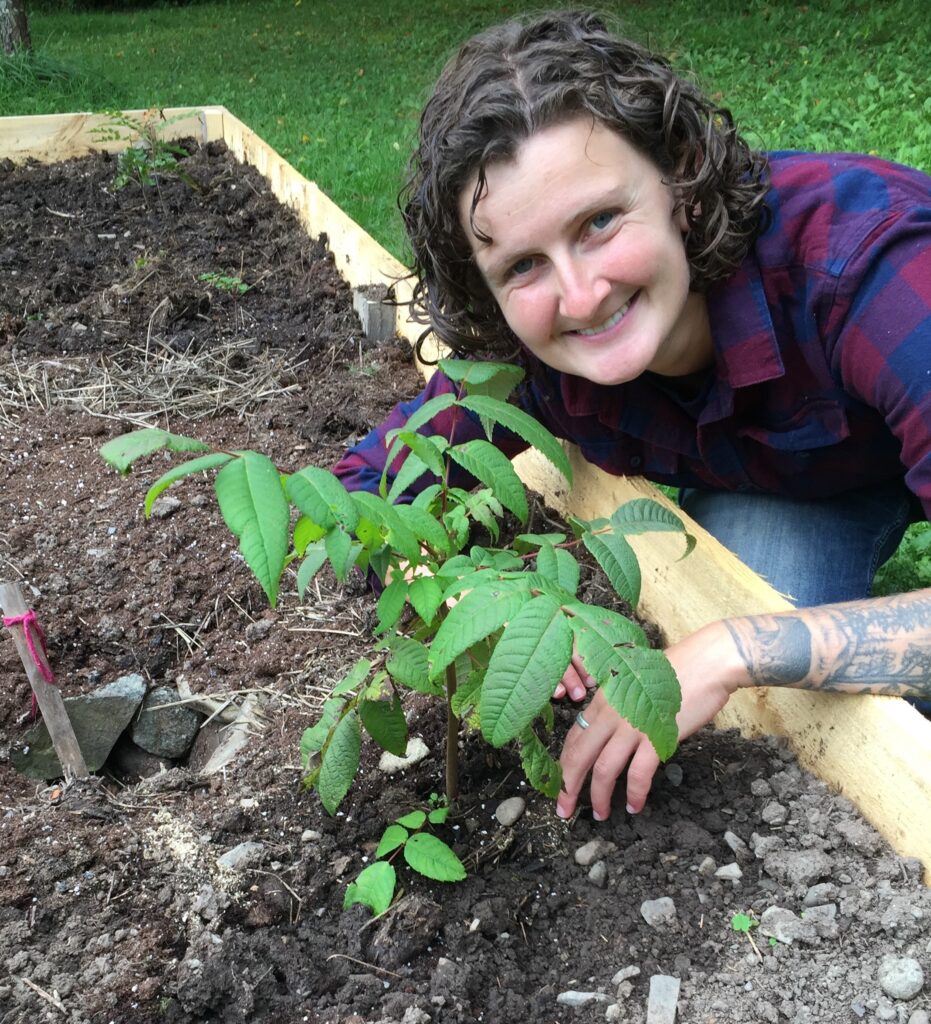
The Upper Wolastoq River Valley region of New Brunswick is located in the central-western part of the province and shares a border with the State of Maine. The area hosts over 40 communities and is home to mixed wood forest known as the “Acadian Forest.” The Acadian Forest is special because of its mix of hardwood and softwood species, a unique combination found in only three regions in the northern hemisphere.
With over 60 native trees and shrubs, the Upper Wolastoq River Valley ecosystem serves as a habitat for many plants, animals, and birds. Unfortunately, only one percent of the Acadian Forest remains. People living in the region can help re-establish the Acadian Forest by learning more about the trees and shrubs that thrive in the area.
Below, we list some of the many boreal and deciduous species that you can add to your yard or community to increase biodiversity, support native plants and animals, and beautify your property. Continue reading to learn more!
Softwood Trees of the Acadian Forest
Softwood trees are easy to identify because they are conifers, meaning they have needles rather than leaves. Their seeds grow inside cones rather than being housed within fruits or nuts. Softwoods tend to be lighter weight and less dense than hardwoods, but that doesn’t always mean their wood products are less strong!
Softwood species include fir, pine, spruce, and cedar trees. They are fast-growing and tend to be lower cost than hardwoods when purchased at a tree nursery. Conifer trees are a low-maintenance addition to your property that your family can enjoy for generations. Softwood species in the Upper Wolastoq River Valley region include:
- Balsam Fir
- Tamarack
- White Spruce
- Black Spruce
- Red Spruce
- Jack Pine
- Red Pine
- White Pine
- White Cedar
- Eastern Hemlock
Learning more about identifying each hardwood tree above will make it easier to spot them in your community. Likely, you will begin noticing them more in your neighbourhood and along rural roadways. Collect some seeds whenever you can, and plant some at home!
To learn more about the most common uses for softwood tree species, take a look at our Trees of the Upper Wolastoq Region guide!
Hardwoods Trees of the Acadian Forest
Hardwood trees are usually deciduous, meaning they drop their leaves every autumn and produce seeds enclosed inside keys, catkins, fruit, or nuts. Hardwoods tend to have broad, flat leaves. They are slow growers with heavier and more dense wood than most softwood tree species.
Hardwood trees include maple, birch, beech, ash, poplar, aspen, oak, willow, elm, and more! They add biodiversity to your yard and attract many insects, birds, and animals that rely on the blossoms, fruit, and seeds throughout the year. Many hardwood species can also provide sap, nuts, and berries that you and your family can enjoy too!
Harwood species in the Upper Wolastoq River Valley region include:
- Red Maple
- Sugar Maple
- Silver Maple
- Yellow Birch
- White Birch
- Beech
- White Ash
- Black Ash
- Red Ash
- Balsam Poplar
- Largetooth Aspen
- Trembling Aspen
- Bur Oak
- Red Oak
- Black Willow
- White Elm
- Serviceberry
- Black Cherry
- Downy Serviceberry
- Basswood/Large Leaf Linden
- Butternut
- Hophornbeam
If you are lucky enough to have hardwood trees in your area, collect as many seeds as you can! Plant them in your own yard or share them with others in your community to do your part to restore more of the Acadian Forest!
Learn more about the most common uses for softwood tree species in our Trees of the Upper Wolastoq Region guide!
Shrubs of the Acadian Forest
In addition to a mix of hardwood and softwood trees, the Acadian Forest is home to many shrubs that play a vital role in the ecosystem and support many birds and mammals. Shrubs provide nesting sites, shelter, protection, and food for many species that call the Upper Wolastoq River Valley region home. Adding shrubs to your property is also an attractive way to add visual interest throughout the year.
Shrubs that provide an abundance of berries, nectar, pollen, and, in some cases, medicine include:
- Striped Maple
- Mountain Maple
- Speckled Alder
- Serviceberry
- Witchhazel
- Alternate Leaf Dogwood
- Red Osier Dogwood
- Beaked Hazelnut
- Hawthorn
- Pin Cherry
- Choke Cherry
- Staghorn Sumac
- Elderberry
- Willow
- Red Berried Elder
- American Mountain Ash
- Canada Yew/Ground Hemlock
- Hobblebush
- Wild Raisin
- High Bush Cranberry
Learn more about all the shrubs that thrive in the Upper Wolastoq River Valley region in our shrub guide, and plan to incorporate some into your yard or garden. You’ll love watching all the wildlife enjoying the safety and sustenance that you provide for them!

Interested in Learning More About Forest Restoration Efforts in New Brunswick?

Do you want to learn more about doing your part to help restore the Acadian Forest in New Brunswick while supporting biodiversity on your property? Then be sure to follow the Knowlesville Art and Nature Centre on Facebook and Instagram!
In partnership with The Tree Project, we offer a variety of learning opportunities and events throughout the year to help you learn more about trees and shrubs that thrive in the Upper Wolastoq River Valley region.
Be sure to take a look at our free resources through the Forest Nurseries Restoration Project too!
